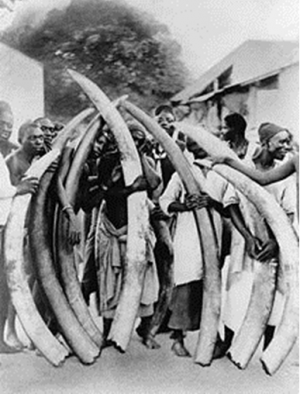News
Latest Lion Aid News
Thumbing their noses at CITES - Zimbabwe's ivory trade
Friday 5th April 2013
|
It has been going on for a while.....
After the Conference of Parties in Doha (2010) where such non-commercial trade in ivory carvings was authorised, CITES made a small change in the regulations. Before, Zimbabwe’s licenced domestic dealers were issuing “Short Export Permits” supplied as blank forms by the Zimbabwe CITES Management Authority, and only needed to be filled in and then endorsed by a Customs officer to permit the buyer to take ivory home. Acknowledging that that practice was a bit out of the ordinary, CITES decided to do away with permits issued by dealers and told customers to get a “real” export permit from one of the three Management Authority offices in Zimbabwe before being allowed to export their carvings. Not a big change really, and one probably ignored. In a corrupt country like Zimbabwe, CITES permits for practically anything can probably be bought with ease. Zimbabwe is desperate to sell the ivory they have stockpiled. They were allowed to do so by CITES in 1999 when Zimbabwe, Botswana and Namibia were given permission to sell a total of 49 tons to Japan, and again in 2008 when Zimbabwe, Botswana, Namibia and South Africa sold a total of 101 tons to China and Japan. However, the Zimbabwe National Parks & Wildlife Management Authority now seems to be $10 million in arrears and would like to sell the current stockpile for $8 million or so. Proceeds would go to antipoaching, enforcement, and Quelea control (Queleas are small seed-eating birds that join in huge flocks and can devastate crops). There was no proposal to CITES in 2013, but the Minister is eager to have one on the table in 2016. Meanwhile, CITES trade records show that Zimbabwe has been doing quite well in ivory sales, thank you very much. CITES trade records only go up to 2011, and can only be considered partial for that year. Nevertheless, in 2010 and 2011 alone, Zimbabwe exported 101,651 grams of ivory carvings (83,256 grams to China and 12,670 grams to Slovakia as the major consumers); 3,141 kilos of ivory carvings (3,080 kilos to China); and 2,927 individual carvings (2,547 to China). That’s a lot of carvings in two years, all for non-commercial purposes of course, and doubtless all bought by hordes of Chinese tourists travelling to Zimbabwe. Also, and this is where things get a bit shady as CITES only allows trade in “carvings”, Zimbabwe exported 1,207 kilos of ivory “pieces” to Japan in 2009; 10,910 kilos of tusks from 2009-2011 (2,798 kilos to China and surprisingly, 4,156 kilos to USA as major destinations; others include Germany, Spain, UK, Italy, Poland, Russia and Slovakia); and 515 individual tusks from 2009-2011 (128 to South Africa and 75 to China as major destinations; others include Germany, Spain, Ireland and Romania). All duly issued with export permits by the Zimbabwe CITES Management Authority and all duly registered in the CITES trade database. But what about the legality of those sales? These are not hunting trophies but an entirely different category of exports. These ivory exports seemed to raise no eyebrows at the CITES Secretariat. The way CITES operates is that member states (the Parties) are “requested” to abide by the rules set by the Secretariat and the Conferences of Parties, and that no Party trades with another in wildlife products that are not approved. CITES permits are however issued locally, and can create a shambles for CITES rules and regulations until such “irregularities” are detected and the Secretariat issues a warning. Being a rather secretive organization (maintained with our taxes) we are not allowed to know what Parties have been issued warnings and whether these were heeded. Meanwhile Zimbabwe continues to trade in tons of ivory, seemingly ignoring the fact they are not allowed to sell any under current rules. In 2008 CITES allowed Zimbabwe to sell 3,700 kg of ivory legally. Since then and up to 2011, Zimbabwe has exported on the order of 19,842 kilos of ivory that are not “carvings”. To me, at current minimal prices of about $500 per kilo, it seems that would supply lots of funds to battle those pesky Queleas? Picture credit: US Library of Congress: cph.3c02973 Please support us if you can to conserve the remaining fragile lion populations. Thank you. Tags: CITES, Namibia, South Africa, Zimbabwe, China, ivory, Thailand, Japan, Categories: Illegal Wildlife Trade |
Posted by Pieter Kat at 17:01
No comments have been posted yet.
Add a new comment
Existing user
New user sign up




